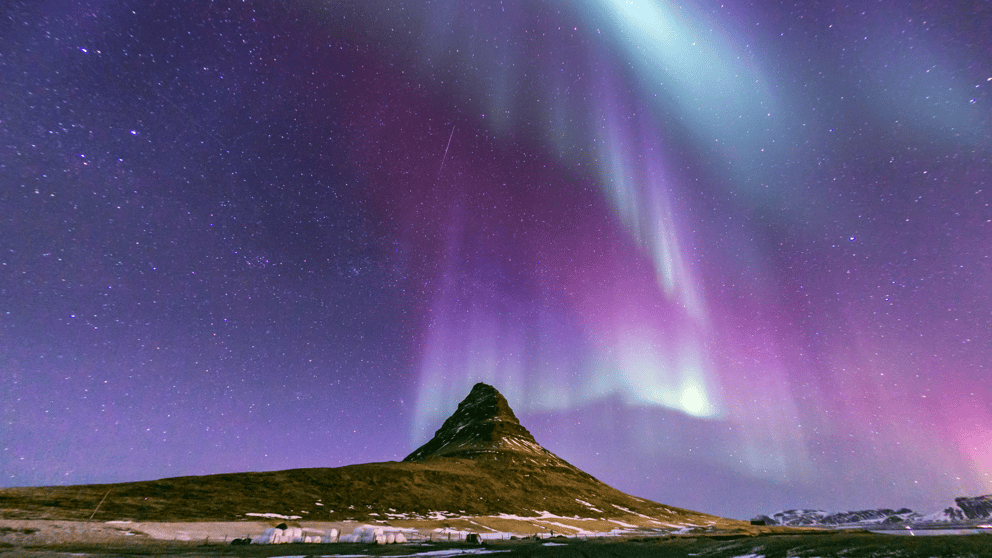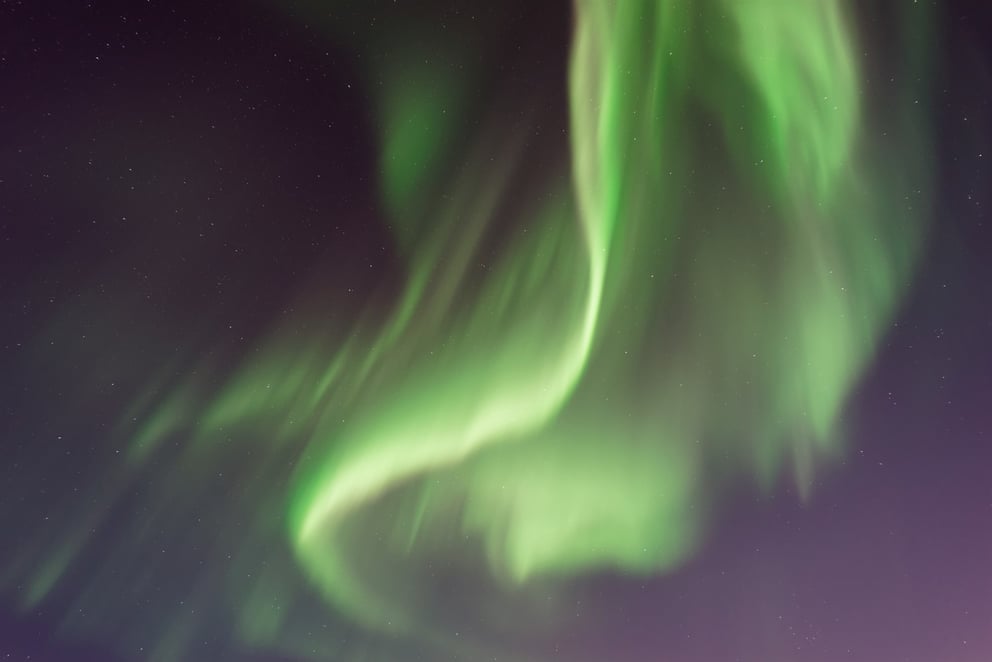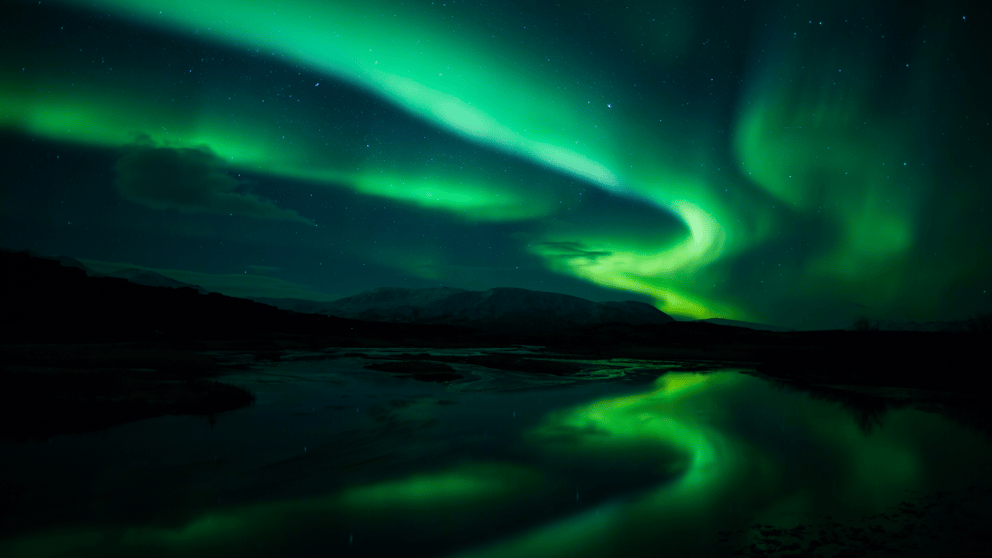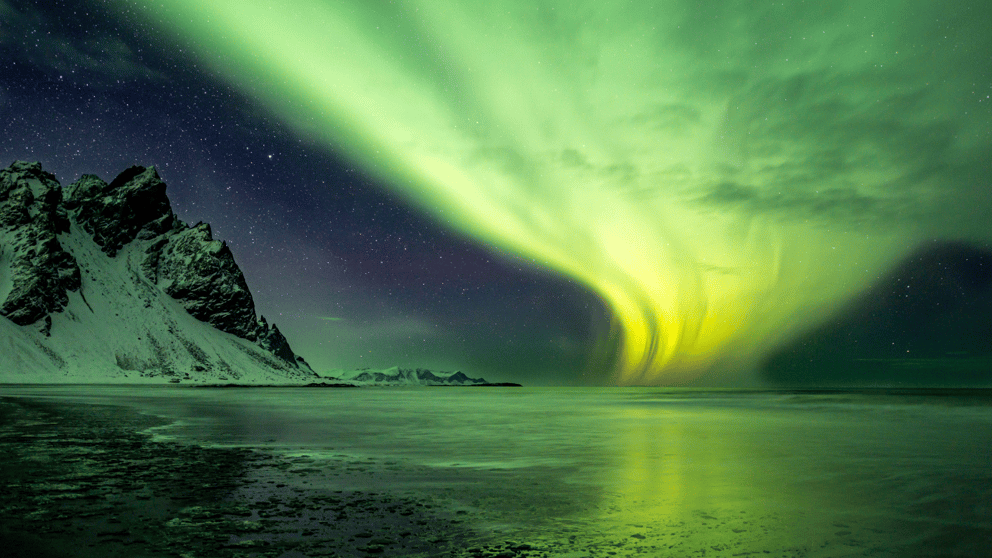Guide to the Northern Lights in Iceland
Your Guide to the Northern Lights in Iceland
There’s no doubt you will have seen images of these spectacular lights that dance around in the sky before, and you may be pleased to discover that they can be seen from many places in the northern hemisphere. The Northern Lights are most commonly green in color, but can also sometimes be white, pink, and purple. They are also one of the main reasons that so many people flock to Iceland each winter.
In fact, Iceland is an incredibly popular destination for watching the Northern Lights, as it needs to be completely dark for you to have a chance of seeing them. During the winter, there is very little daylight in Iceland, and it is dark most of the time. This creates the perfect conditions for seeing the Northern Lights.
What are the Northern Lights?
The Northern Lights are a natural phenomenon that occurs when the sun’s electrically charged particles collide with gas particles in the Earth’s atmosphere. These aurora lights not only occur in the north but in the south, too. Many people don’t know this, but there are both Northern and Southern Lights, known as Aurora Borealis and Aurora Australis, respectively. This phenomenon only occurs in these regions due to the magnetic poles. In actual fact, the lights occur throughout the day, but sunlight makes it impossible to see the rays.

When is the Best Time to See the Northern Lights in Iceland?
It is important to remember that there is no guarantee you will see the Northern Lights in Iceland. However, if you are keen to maximise your chances, you will need to time your visit carefully. It is technically possible to see the Northern Lights from late August to mid-April, but you have the only chance in Iceland during the winter months.
Although there is a small chance of seeing the Northern Lights at other times during the year, the conditions associated with long days and the midnight sun make it incredibly difficult to spot the aurora. This is because the lights can only be seen when it’s dark.
The best time to catch a glimpse of the lights is typically between 9:30 pm and around 1 am. The Northern Lights usually occur in spells, too, so we recommend visiting for at least 5 days to stand a good chance of seeing them.

Where Can I See the Northern Lights in Iceland?
You can actually see the Northern Lights all over Iceland, including in Reykjavík. It is better to try to see the lights away from towns and populated areas. This is because when the Northern Lights are not particularly strong, light pollution can affect your chances of seeing the Aurora Borealis. Heading to a more isolated part of Iceland, without lights from cars and buildings, will give you a better chance of seeing the lights, even at their weakest. Some great locations you can head to see the aurora include;
- Grótta – located close to downtown Reykjavík, this isolated area is perfect for watching the Northern Lights. It’s great for wildlife during the day, too, like birds.
- Öskjuhlið – this area is similar to a forest, located in Reykjavík, and doesn’t have much light pollution. The dome-shaped building in the centre of this woodland is called Perlan and has a glass observation deck on the top floor, which is perfect for viewing the Northern Lights.
- Thingvellir National Park – known in Iceland as þingvellir, this national park is a great place for viewing the Northern Lights relatively close to Reykjavík.
- Jökulsárlón Glacier Lagoon – A little further afield from the capital, this is one of the most beautiful places to watch the Northern Lights. Watching the lights at Jökulsárlón offers spectacular views of untouched nature and minimal light pollution for optimal viewing.
Can I See the Northern Lights in Reykjavík?
If you’re only planning to visit Reykjavík on your journey to Iceland, you might be wondering whether it’s possible to spot the lights of the Aurora from the capital. The answer is ultimately yes! It’s absolutely possible to see the Northern Lights from Reykjavík, in the right conditions. You’ll need to have the right light conditions, Aurora activity, and cloud cover over the city to capture them properly.
However, it’s worth considering that light pollution will affect how visible the phenomenon is. For the highest chance of seeing the Northern Lights in Iceland, head to more rural areas where light pollution is minimal.

How Can I See the Northern Lights in Iceland?
As we’ve already mentioned, there is no way to guarantee that you will see the Northern Lights during your time in Iceland. Going at the right time of year, during the right hours of the day, and also away from light pollution will increase your chances significantly. The weather in Iceland can also be unpredictable, which can mean cloud cover changes by the hour, ruining your clear sky. The Northern Lights forecast will be your best friend, letting you know when and where you should head for this incredible light show.
Tips for Spotting the Northern Lights in Iceland
Alongside the right conditions and a little bit of luck, there are some ways to ultimately maximise your viewing chances.
- Book a Northern Lights tour: One way to maximise your chances is to head out on a guided tour, which will do all the hard work for you. But note that these are also not 100% successful!
- Avoid light pollution: Head to more rural areas of Iceland, as any light pollution will dim the appearance of the Aurora Borealis significantly.
- Prepare to be patient: Most of the time, spotting the Northern Lights will take a few attempts, so if it’s the top of your list, be prepared to spend a few nights attempting to see the lights!
The elusive nature of the Northern Lights is one of the things that earns its place on many people’s bucket lists.

Northern Lights on a Self-Drive Trip
While a tour might provide some advantages, there will always be time and destination limitations. If you have hired a car in Iceland, you can embark on your own Northern Lights hunt. This can start wherever you are, meaning you can start your search away from the crowds, and it can last as long as you want. However, it’s always important to be safe first, which means:
- Never stop on a road to take pictures or look at the Northern Lights. Park up in a designated zone.
- Never drive off-road in Iceland, as you could damage wildlife irreparably.
- Always keep your eyes on the road while driving.
It’s important to note that driving in winter in Iceland and the dark comes with its own unique challenges. Safety should be your priority, so always take care on roads all across Iceland if on a road trip.
Northern Lights in Iceland FAQs
Are you guaranteed to see the Northern Lights in Iceland?
No, you are not guaranteed to see the Northern Lights on your trip to Iceland. You’ll need to be in the right place at the right time, with minimal light pollution and low cloud cover, and hope for high Aurora activity.
Can you see the Northern Lights at the Blue Lagoon?
In theory, the Blue Lagoon is the perfect place to see the Northern Lights. It’s away from light pollution, situated in a more rural location, yet still accessible from the capital city.
How many days should I spend in Iceland for the Northern Lights?
As you might expect, the longer you can spend in Iceland, the higher the chance you have of spotting the Northern Lights. Travel experts suggest that 4-7 days is a good amount of time to be in Iceland if you want to spend ample time hunting the Northern Lights.
Seeing the Northern Lights in Iceland is never guaranteed, but that’s part of what makes the experience so special. If you’re prepared, flexible, and willing to wait, the reward of watching the sky come alive with color is unforgettable. Start planning your trip to Iceland, and with any luck, you’ll glimpse this Bucket List-topping phenomenon.

